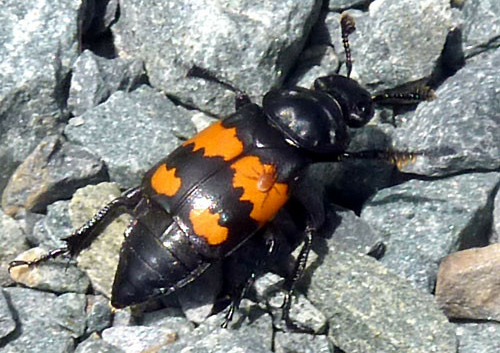SOLON & BEYOND: Catching up on end of school activities
 by Marilyn Rogers-Bull & Percy
by Marilyn Rogers-Bull & Percy
grams29@tds.net
Solon, Maine 04979
Good morning, my friends. Don’t worry, be happy!
The Solon Masons sponsored the fourth annual “Bikes for Books” program in the Solon Elementary School this spring. This program promoted reading among the K – 5 students.
The program kicked off on April 9. Students read books and filled out a form on each book they read, putting the forms in large envelopes in their classrooms. On May 29, they held an assembly to do a drawing for a boy and a girl from each class. Each of those students won a new bike, helmet, and T-shirt provided by the Masons. The Masons also gave out an extra T-shirt to another lucky winner in each class.
At the assembly, Deputy Mike Pike went over bike safety with the students, especially the importance of wearing a bike helmet every time you ride.
The students did a lot of reading in the fourth year of this great program. Here are the books total for each grade: Grade K – 72, Grade 1 – 66, Grade 2- 74 , Grade 3 – 47, Grade 4 – 53, Grade 5 – 42; Total of 354 books.
Congratulations to the bike winners and to the top readers in each class who received Wal-mart gift cards: Wilder Taylor, Rowdy Taylor, Charlotte Hamilton, Gavyn Perigo, Jillian Robinson, Katelyn DeDeonardis, Josh Knight, and Macie Plourde.
Thanks to the Masons!
On May 30, Solon Elementary School held a Family Wellness Night. Families enjoyed a chicken barbecue and listened to Carolyn Courtney, from Somerset Public Heath, talk about how important physical activity is to our brains. Students and their families participated in a Healthy Scavenger Hunt, a story walk with the book Blueberries for Sal, and lawn games such as cornhole and ladder ball. Josh Knight and his family won the door prize basket. Each student received a take-home bag with healthy activities to do over the summer.
On Saturday, June 15, Griswold’s had their 6th Annual Customer Appreciation Day. There was a bounce house and a maze for the children to enjoy, free food, and door prizes. Suppliers provided some of the gifts, such as Mountain Dew Apparel, Budweiser Decor, Apparel
Griswold’s gave away a Grill, kayak, RZR rental at 201 Powersports, and a two-night stay at the Pinecone Acres, and other smaller prizes.
The weather was beautiful, the food was good, and the kids had a great time!
The above news was given to me by Tammy, and she wrote at the end; “Thank you to ALL of our wonderful customers for bringing us into our seventh year.
My apologies that some of the e-mails you sent to me didn’t get in because the office was closed last week.
Received a letter from Laurlee Swift about a Solon Homemakers event on July 13 and 14 from 10 a.m. to 2 p.m. , our White Elephant and Baked Goods Sale will be held at the Madison Senior Housing Center (next to Madison High School) on Route 148 (Main Street).
Also received e-mails from Sue Lahti and Tim Curtis about upcoming events in East Madison Days. On July 19 at 6:30 p.m., Book talk with Bobby Clement at the Grange and 7:15 p.m. music with Brian Richmond, Bob Nicholson and friends. On July 20, from 9 a.m. to 3 p.m. yard and bake sale, from 10 a.m. – 3 p.m. : Silent Auction, winners announced on Sunday at 2:30 p.m.
9 a.m. – 3 p.m., antique tools & sharpening – Swiftwater Edge Toolworks, 9 a.m. – noon – Bob Clement is signing and selling his books. 1 – 3 p.mn., “Appraisal fair” with Tom Pomelow (tentative), 4:30 – 6 p.m., baked bean supper at the Grange.
July 21 from 10:30 a.m. – 2:30 p.m. – Silent auction – winners announced at 2-30 p.m. ; 11 a.m. – 1 p.m., Hot dog/dynamite luncheon at EM fire station;1 p.m., Quilts of Valor recognition ceremony; Immediately following – Dedication of the Agricultural and Industrial building to Gary Malbon.
And now for Percy’s memoir, which is titled, Better, Wiser and Happier!” Do you wish the world were better? Let me tell you what to do; Set a watch upon your actions, Keep them always straight and true; Rid your mind of selfish motives; Let your thoughts be clean and high, You can make a little Eden Of the sphere you occupy. Do you wish the world were wiser? Well, suppose you make a start, By accumulating wisdom In the scrapbook of your heart; Do not waste one page on folly; Live to learn, and learn to live. If you want to give men knowledge You must get it, ere you give. Do you wish the world were happy? Then remember day by day Just to scatter seeds of kindness As you pass along the way; For the pleasures of the many may be ofttimes traced to one, As the hand that plants an acorn Shelters armies from the sun. (words by Ella Wheeler Wilcox) I hope those who knew Percy in the past will remember what a smart cat he was and will take the above words to heart!! Thanks for reading!





 (NAPSI)—Most people know someone who has dreamed of leaving the rigidity of a 9 to 5 job to pursue the flexibility of entrepreneurship. The majority don’t pursue that avenue, and the reasons vary, including financial obligations, time constraints, or fear of the unknown.
(NAPSI)—Most people know someone who has dreamed of leaving the rigidity of a 9 to 5 job to pursue the flexibility of entrepreneurship. The majority don’t pursue that avenue, and the reasons vary, including financial obligations, time constraints, or fear of the unknown.









